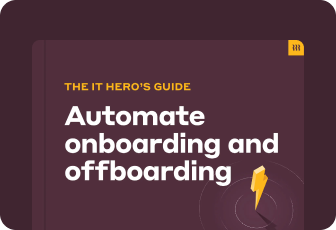COBRA compliance refers to the legal requirement for employers to offer continued health insurance coverage to eligible employees and their families after job loss or other qualifying events. Ensuring COBRA compliance helps businesses avoid penalties and legal issues.
What is COBRA?
COBRA, or the Consolidated Omnibus Budget Reconciliation Act, became law in 1986. It amends the Employee Retirement Income Security Act (ERISA) and gives workers and their families the option to continue their healthcare coverage for a period of time after certain life events such as job loss, reduced work hours, transition between jobs, death, and divorce. These are known as qualifying events (QEs). Individuals who qualify (qualified beneficiaries or QBs) can extend their healthcare benefits for up to 36 months after these events. If the employer doesn’t contribute to the cost of COBRA, the QB may be responsible for the entire premium, up to 102% of the plan’s cost.
Under COBRA, employers that have group health plans with at least 20 employees in the prior year can offer this temporary coverage (continuation coverage) in situations where the employee’s healthcare would otherwise cease.
Complying with COBRA requires a thorough understanding of who qualifies, when, for how long, and under what circumstances. It also requires working with the health plan, issuing notices relating to coverage, following Internal Revenue Service (IRS) and US Department of Labor guidelines, and more.
There are similar state-run programs called mini-COBRAs. These are similar to federal COBRA but generally apply to businesses with fewer than 20 employees. Mini-COBRA regulations differ from state to state, so you’ll need to ensure your business is compliant in states where mini-COBRA applies to your employees.
What employers need to know
COBRA’s complexity makes it challenging for employers to carry out their obligations compliantly. Unless you know the ins and outs of the law, it can be easy to overlook something. Non-compliance can have severe consequences, including fines, legal proceedings, and their associated costs—even damages. The following checklist provides some of the most essential information you’ll need to know if COBRA is triggered for your employees. Here’s what we’ll cover:
- Qualified employers
- Qualified beneficiaries
- Qualifying events
- Duration of coverage
- Covered benefits
- Premiums
- Notices and notice periods
- Early COBRA termination
- Flexible spending and health savings accounts (in FAQs)
- Federal and state family and medical leave (in FAQs)
Which employers need to offer COBRA coverage?
If you’re an employer with a group health plan and had 20 or more employees working more than 50% of your typical business days in the previous calendar year, you must offer COBRA coverage. Both full- and part-time employees are included in your count.
Who are the qualified beneficiaries (QBs)?
According to the Department of Labor (DOL), for a worker to be considered a qualified beneficiary, a COBRA qualifying event must occur (i.e., an employee losing their job). In that case, QBs include current and former employees, their spouses (current and former), and dependent children. The nature of the qualifying event can impact eligibility.
In most situations, employees become eligible for COBRA because they've been terminated. However, they may also be eligible due to other changes, like moving from full-time to part-time or W-2 employment to 1099 contracting work.
The US Department of Health and Human Services administers COBRA for public sector workers.
What constitutes a qualifying event (QE)?
Qualifying events are circumstances that cause a person to lose their employer-sponsored group health benefits. The kind of event determines who qualifies and how long their healthcare coverage can be extended after the QE. COBRA establishes the requirements for extended coverage for applicable employers. Healthcare plans may be offered for longer coverage periods and additional contributions toward the cost.
QEs break down into two main categories:
- Covered employees (if they lose coverage)
- Termination of the covered employee’s employment for any reason other than gross misconduct
- A reduction of the covered employee’s hours
- Spouse and dependent child of a covered employee (if the spouse or dependent child loses coverage)
- Termination of the covered employee’s employment for reasons other than gross misconduct
- A reduction of the covered employee’s hours
- The covered employee qualifies for Medicare
- Divorce or legal separation from the covered employee
- The covered employee passes away
Another qualifying event occurs when the dependent child of a covered employee loses coverage under the Affordable Care Act. The ACA mandates that adult children can be on their parent’s healthcare plan until they turn 26. They are then eligible for COBRA continuation coverage assuming other eligibility requirements are met.
How long does COBRA coverage last?
The length of COBRA coverage depends on the qualifying event. Continuation coverage for qualified beneficiaries starts on the date of the qualifying event and continues for the following periods:
- 18 months: For any termination of employment (not including gross misconduct) or reduced work hours
- 29 months: For qualifying beneficiaries who are classified as disabled under the Social Security Act
- 36 months: For other qualifying events such as the death of the covered employee, medicare entitlement, divorce, or legal separation
The employer may choose to extend the coverage period if they wish. In addition, a second qualifying event may result in additional coverage.
What benefits are covered under COBRA?
The standard of continuation coverage is set by COBRA and must be identical to the coverage available to employees. This means the same benefits that the QB had prior to the qualifying event must be made available for purchase.
What are the COBRA premiums?
Employers can offer continuation coverage at no additional cost to the employee (employer pays) or charge a premium (employee pays). If an employer charges a premium, it can be no more than 102% of the plan's cost for the same healthcare benefits offered to those employees under regular coverage.
When determining the premiums for continuation coverage, businesses can factor in costs covered by both the employee and the employer, along with an extra 2% to cover administrative expenses. In the case of qualified beneficiaries who are granted an 11-month disability extension, the premium for those added months may be raised to 150% of the plan's overall cost of coverage.
COBRA premiums can be increased for qualified beneficiaries in response to rising health plan costs. However, as a general rule, plans are required to establish and maintain fixed premiums for each 12-month premium cycle. Employers must offer eligible QBs a monthly payment plan and a minimum 30-day grace period from the due date for all payments.
What are the notice procedures for COBRA?
COBRA’s notice requirements are complex. There are several specific notices that applicable employers must issue to explain COBRA benefits and rights. To remain compliant, these employers need to know what notices apply, who receives them, and when. Let’s take a look at the different notices and employer obligations:
Summary Plan Description (SPD)
Under COBRA regulations, a summary plan description must be provided to covered employees (and their spouses). The SPD is a written document that provides information about the plan. It explains the benefits offered, the rights of the qualified beneficiaries, and how the plan works. In most cases, employees and their spouses must receive an SPD within 90 days of becoming a plan participant. If there are changes to the plan, a Summary of Material Modifications (SMM) must be issued. Reductions in coverage require an SMM to be issued within 60 days of the reduction being adopted.
COBRA general notice
Employees and their spouses must receive a general notice that describes their COBRA rights within the first 90 days of coverage. An easy way to fulfill this requirement is to include the general notice with the SPD and ensure that the employee and their spouse receive it within the time limit.
The COBRA general notice must include:
- Name of the plan and contact information for QBs to find out more about COBRA and the plan
- An overview of the coverage provided
- An explanation of what QBs must do to report qualifying events or disabilities
- A reminder to keep QB contact information (especially addresses) up to date
- A statement that neither COBRA nor the plan is fully described in the general notice and that QBs can obtain complete information from the plan administrator or the SPD.
A blank model general notice form is available on the Department of Labor’s website. When completed correctly, these are considered to be good faith compliance with COBRA’s general notice content requirements.
Qualifying event notice
The group health plan must be notified of qualifying events. Until the qualifying event notice is received, the plan is not required to act. The qualifying event notice can be given by the employer or the QB, depending on the nature of the qualifying event.
The employer must notify the plan administrator of the following qualifying events within 30 days:
- Termination of the covered employee
- Reduction of the covered employee’s hours
- Death of the covered employee
- The covered employee becomes eligible for Medicare
- Bankruptcy of the employer
The covered employee or QB must notify the plan administrator of the following qualifying events:
- Divorce
- Legal separation
- Child losing dependent status under the plan
Notice periods are generally 60 days from the date of the qualifying event, the date coverage ends or would end, or the date that the qualified beneficiary is informed (whichever comes last).
COBRA election notice
After receiving a qualifying event notice, the plan administrator has 14 days to give the qualified beneficiary an election notice. The election notice outlines the QB's rights to continuation coverage options and how to elect COBRA coverage. Note that if the employer notifies the plan administrator of a qualifying event, the notice period is 44 days.
A model election notice is available on the Department of Labor’s website.
Notice of unavailability of continuation coverage
If a request for continuation coverage is denied, the plan administrator must provide the denied individual a notice of unavailability of continuation coverage within 14 days of receiving the request. The notice must explain why the request for coverage was denied.
Notice of early termination of continuation coverage
Continuation coverage may be terminated before the maximum period (18, 29, or 36 months). In this case, the employer must provide the reason(s) to the QB in a notice of early termination. The notice should be sent as soon as possible after the decision is made. The notice must provide the date coverage will end, the reason, and any rights under the plan or applicable law that the QB may have to elect alternate coverage. Note that there are special rules for multiemployer plans.
Distribution of COBRA notices
COBRA notices must be delivered to qualified beneficiaries in the required legal format. This includes hand delivery, first class, certified or express mail, or electronically. The employer needs to confirm which format applies and all the parties that require the notice (i.e., QBs that live at a different address).
The Department of Labor has specific guidelines for sending ERISA-required documents electronically. Before sending, employers must ensure that the documents are compliant.
What are the reasons for terminating COBRA coverage early?
Continuation coverage can be terminated early for any of the following reasons:
- Premiums not fully paid when due
- The employer ceases to offer a group health plan
- QB moves to another group health plan after electing continuation coverage
- QB becomes entitled to Medicare after electing continuation coverage
- QB is no longer considered disabled
- Fraud or misconduct
If coverage is terminated, a notice of termination must be sent to the QB (see above).
Which states require COBRA?
While COBRA is a federal law, several states offer their own health insurance coverage extensions. In many respects, mini-COBRA is similar to COBRA, but it applies to group health coverage of employers with fewer than 20 employees. The coverage rules differ from state to state, so employers must be familiar with the state’s mini-COBRA rules.
Though subject to change, the following states currently have mini-COBRA laws:
- Arizona
- Arkansas
- California
- Colorado
- Connecticut
- District of Columbia
- Florida
- Georgia
- Illinois
- Iowa
- Kansas
- Kentucky
- Louisiana
- Maine
- Maryland
- Massachusetts
- Minnesota
- Mississippi
- Missouri
- Nebraska
- Nevada
- New Hampshire
- New Jersey
- New Mexico
- New York
- North Carolina
- North Dakota
- Ohio
- Oklahoma
- Oregon
- Rhode Island
- South Carolina
- South Dakota
- Tennessee
- Texas
- Utah
- Vermont
- Virginia
- West Virginia
- Wisconsin
- Wyoming
FAQs about COBRA and COBRA compliance
What penalties do employers face for COBRA non-compliance?
Employers found non-compliant with COBRA regulations may incur penalties, such as fines imposed by the Department of Labor under ERISA and penalties levied by the IRS. Non-compliance can expose you to civil lawsuits, legal expenses, and damages.
What are Flexible Spending Accounts (FSA)?
Flexible Spending Accounts or Flexible Spending Arrangements are accounts that employees can use to save money for specific out-of-pocket medical expenses. These contributions aren’t taxed, but the IRS sets yearly contribution limits ($3,200 for the 2024 tax year). The accounts are employer-managed, and any contributions in them must be used by the end of the calendar year, or they may be forfeited.
What are Health Savings Accounts (HSA)?
Employees with high-deductible health plans (HDHP) can set up Health Savings Accounts. These are offered by banks, credit unions, and other financial institutions. Contributions and growth are not taxed, and the account is owned by the employee. For 2024, the IRS has set the contribution limit at $4,150. Any balance not used within the calendar year is carried over.
What are Health Reimbursement Arrangements (HRA)?
Health Reimbursement Arrangements or Health Reimbursement Accounts, are group health plans funded by employers. These plans allow employees to receive tax-free reimbursements for qualified medical expenses, up to a specified annual limit. The limit for 2024 is $4,150 for single coverage and $8,300 for families. Any unused funds can be carried forward. The employer both funds and maintains ownership of the arrangement.
Does COBRA impact federal or state family and medical leave laws?
According to the Department of Labor, group health coverage provided under the federal Family and Medical Leave Act (FMLA) during leave is not considered COBRA continuation coverage, and family or medical leave is not considered a qualifying event under COBRA. Employers are required to maintain coverage for employees on FMLA leave. FMLA leave could be considered a qualifying event if the employee decides not to return to work. The DOL has more on this.
For states that offer family and/or medical leave, employers should check with state authorities that manage such plans.
Rippling and its affiliates do not provide tax, accounting, or legal advice. This material has been prepared for informational purposes only, and is not intended to provide, and should not be relied on for tax, legal, or accounting advice. You should consult your own tax, legal, and accounting advisors before engaging in any related activities or transactions.












































































































